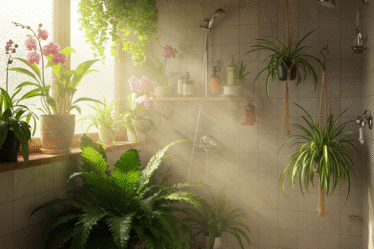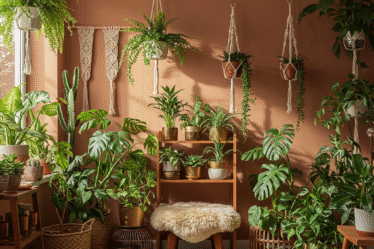
Drooping leaves can send any plant parent into a panic. Is it dramatic? Perhaps. But the truth is, limp foliage is often the first visible sign that something isn’t quite right in your plant’s world. Luckily, diagnosing the cause and implementing a quick fix is usually easier than you think. This article explores the most common culprits behind droopy dilemmas and provides practical solutions to revive your wilting greenery.
Overwatering is arguably the most frequent offender. While we all want happy, hydrated plants, too much of a good thing can lead to root rot, which prevents the plant from absorbing the water and nutrients it needs. Feel the soil – if it’s soggy, your plant is likely drowning. Allow the soil to dry out completely before watering again, and ensure your pot has proper drainage.
Underwatering, on the other hand, creates a more immediate droop. The plant, quite simply, is thirsty! Stick your finger about an inch into the soil. If it feels dry, give your plant a thorough watering, allowing excess water to drain out. Remember, different plants have different watering needs, so research your specific variety.
Beyond watering, temperature fluctuations can also cause leaf droop. Extreme heat or cold can stress your plant, leading to wilting. Move your plant to a more stable environment, away from drafts, air conditioning vents, and radiators. Consider a humidifier if the air is particularly dry, especially during winter months.
Nutrient deficiencies can manifest as droopy leaves, too. A lack of essential nutrients like nitrogen, phosphorus, or potassium can weaken the plant and affect its overall health. Use a balanced fertilizer appropriate for your plant type, following the instructions carefully. Over-fertilizing can also cause problems, so moderation is key.
Pests and diseases can also contribute to droopy leaves. Inspect your plant carefully for signs of insects or fungal infections. Treat any infestations promptly with appropriate insecticides or fungicides. Sometimes, repotting with fresh soil can help eliminate persistent pests or diseases.
Finally, consider the pot itself. If your plant has outgrown its container, its roots become constricted, hindering water and nutrient uptake. Repotting into a slightly larger pot with fresh potting mix can give your plant the room it needs to thrive.
Addressing droopy leaves involves a bit of detective work. By understanding the potential causes and implementing these simple fixes, you can help your plants bounce back to their vibrant, healthy selves. Remember, observation is your greatest tool. Pay attention to your plants’ needs, and they’ll reward you with lush, thriving foliage.



